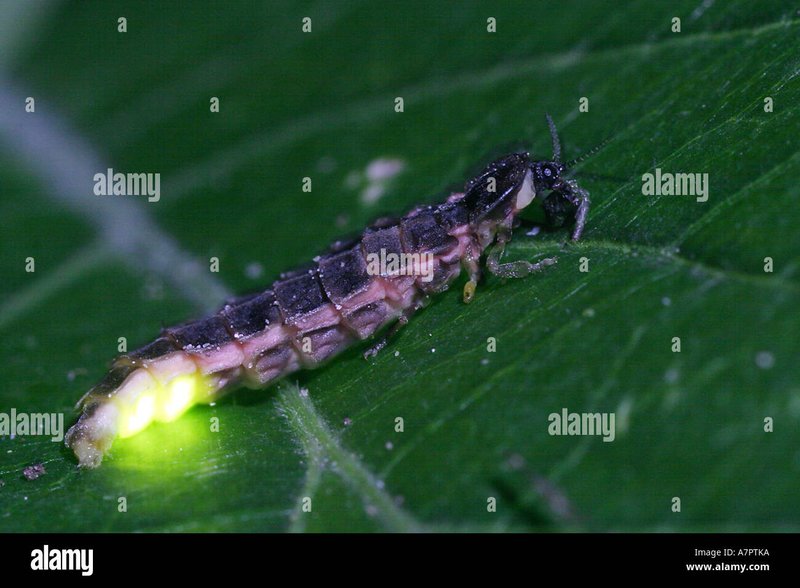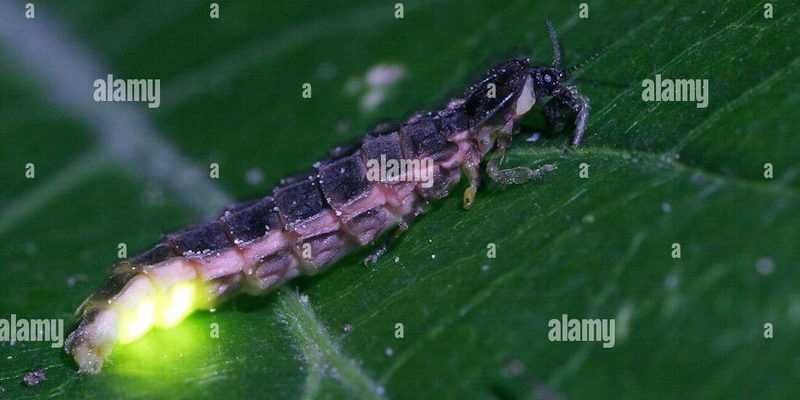
Studying glowworms can uncover a lot about their unique behaviors, life cycles, and the environments they thrive in. You might be wondering, “Can they actually be farmed safely?” This article dives deep into everything you need to know about glowworms in captivity, exploring whether we can study them effectively and if farming them is a feasible option.
What Are Glowworms and How Do They Glow?
Before we get into the nitty-gritty of captivity, let’s take a moment to understand what glowworms are. Glowworms are the larvae of various beetle species, most notably the *Lampyridae* family, which includes fireflies. These larvae produce light through a chemical reaction involving luciferin, a light-emitting compound. This process is similar to what happens when you crack a glow stick!
In nature, glowworms use their bioluminescence to attract prey—usually small insects—toward sticky silk threads they spin. It’s like setting a light trap for dinner! The glow acts like a beacon, drawing in unsuspecting bugs to their doom. In this way, glowworms have adapted to their environment, using their light as both a lure and a survival mechanism.
Can Glowworms Be Kept in Captivity?
Keeping glowworms in captivity poses challenges, but it isn’t impossible. Many researchers and enthusiasts have successfully raised glowworms from larvae to adults under controlled conditions. It requires a deep understanding of their habitat needs, temperature, humidity, and diet. In the wild, glowworms thrive in damp, dark environments like caves or under thick vegetation. Replicating these conditions is crucial for their survival in captivity.
You might be wondering how anyone even starts to keep glowworms. It typically begins with creating the right environment. This includes providing proper moisture levels—about 70-90% humidity—using a substrate they can burrow into, like soil or leaf litter. Additionally, they require low-light conditions to mimic their natural habitat.
The Lifecycle of Glowworms in Captivity
Glowworms undergo a fascinating metamorphosis, transitioning through several life stages: egg, larva, pupa, and adult. In captivity, this cycle can be observed and studied. The larvae—often the most well-known stage—can glow for up to several months, creating those breathtaking displays of light.
The first stage begins with eggs laid in moist conditions. Once hatched, the larvae emerge and start to glow. They spend most of their lives in this larval stage, feeding and growing. Typical larval life can last from 6 months to a year, depending on environmental conditions. Eventually, they spin a cocoon and undergo metamorphosis into pupae.
Many people find it fascinating to observe the metamorphosis in real-time. Captive studies have provided insight into the best conditions for growth and survival.
Is Farming Glowworms Viable?
Now, let’s tackle the big question: can glowworms be farmed? Farming glowworms is different from keeping them as pets; it involves breeding them on a larger scale for potential research, conservation, or even educational purposes. While it sounds intriguing, it comes with significant hurdles.
One major challenge is the need for specialized environments that mimic their natural habitat. This is critical because improper conditions can lead to high mortality rates. Additionally, the feeding process can be tricky; glowworms primarily eat small insects, which means a farm would need to cultivate a constant food supply as well.
There’s also the ethical dilemma of farming glowworms for profit. Ensuring they’re treated humanely and that their ecological role is preserved is essential. Anyone considering farming them should do extensive research and possibly work with experts in entomology or environmental science.
Research Opportunities with Glowworms
Studying glowworms in captivity opens doors to various research opportunities. Scientists can explore their unique biology, behaviors, and even the environmental factors that affect their glowing abilities. This research can lead to discoveries that might benefit fields like agriculture, ecology, and even medicine.
For example, understanding the bioluminescent process could inspire new technologies, such as creating sustainable lighting or innovative biological applications. Additionally, studying how glowworms interact with their ecosystems can help with conservation efforts, especially as natural habitats face threats from urbanization and climate change.
Conservation and Ethical Considerations
Conservation is a critical concern when discussing glowworms. Many species are threatened due to habitat loss, pollution, and climate change. For this reason, keeping glowworms in captivity can aid in conservation efforts. Breeding programs can help maintain populations and even reintroduce them into the wild where necessary.
However, ethical considerations must always be at the forefront. Captive breeding should never replace habitat preservation. Instead, the two should work hand-in-hand to ensure the survival of these incredible insects. Anyone involved with glowworm research or farming should prioritize ethical practices, ensuring they contribute positively to conservation efforts.
To summarize, glowworms captivate us not just with their enchanting glow but also with their potential for research and conservation. While keeping them in captivity is feasible, it requires careful planning and ethical considerations. Farming them poses its own set of challenges, but the possibilities for study and conservation can offer valuable insights into our natural world.
As we learn more about these incredible creatures, let’s make sure we respect their needs and contribute to their preservation in the wild. Whether you’re a curious beginner or an aspiring researcher, glowworms offer a unique opportunity to explore the intersection of science, nature, and wonder. So next time you see a glowworm, take a moment to appreciate the magic—and the science—behind their brilliant glow.

